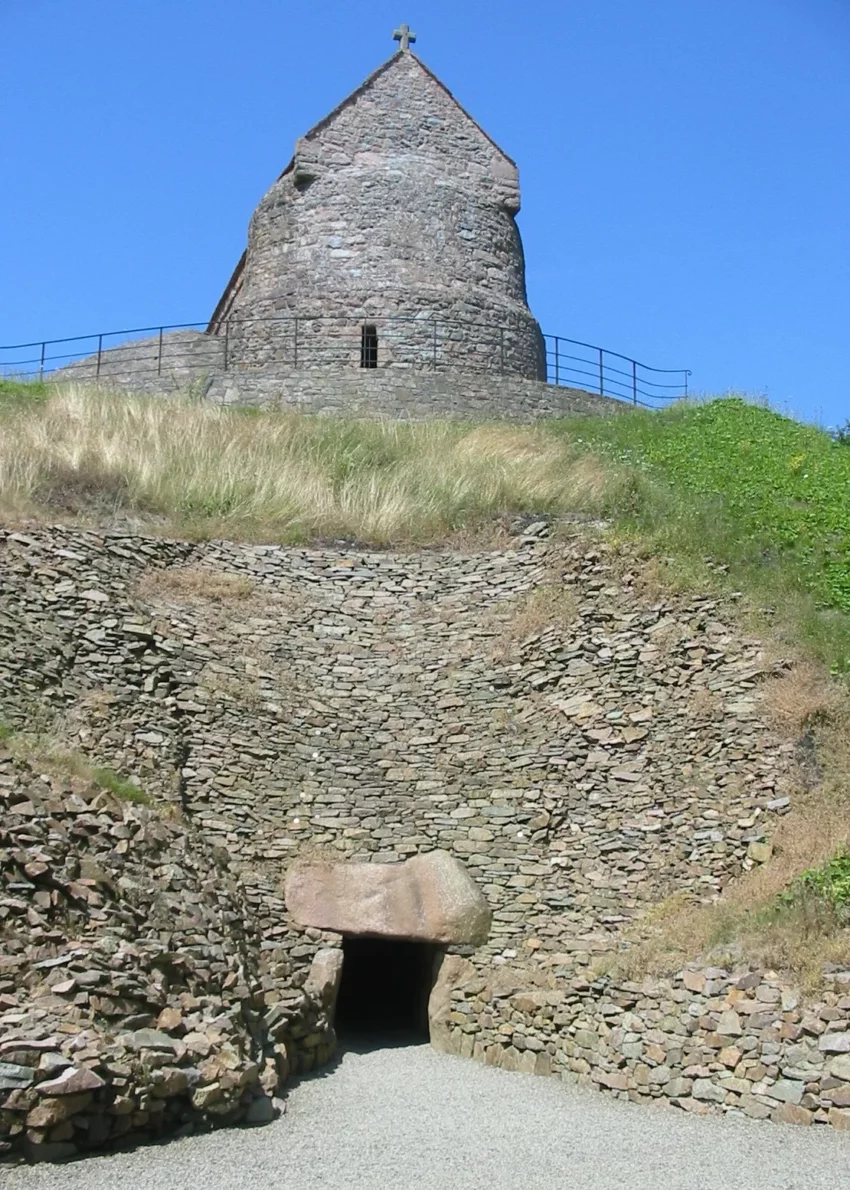Introduction to La Hougue Bie
La Hougue Bie stands as a significant historical site in the parish of Grouville, Jersey. This site not only features a museum but also graces the 2010 issue of the Jersey 1 pound note. Its rich history and archaeological significance make it a focal point for both locals and visitors.
Get your dose of History via Email
Understanding the Name: La Hougue Bie
The term “Hougue” is a variant from Jèrriais/Cotentin, akin to the Norman “Hogue,” meaning “mound” or “heap,” derived from the Old Norse “haugr.” The component “Bie” remains less clear, but theories suggest connections ranging from the Seigneur of Hambye to Old Norse and local Jèrriais origins. The name likely denotes a structure atop an earth mound, reflecting its ancient roots and the layered history of the region.
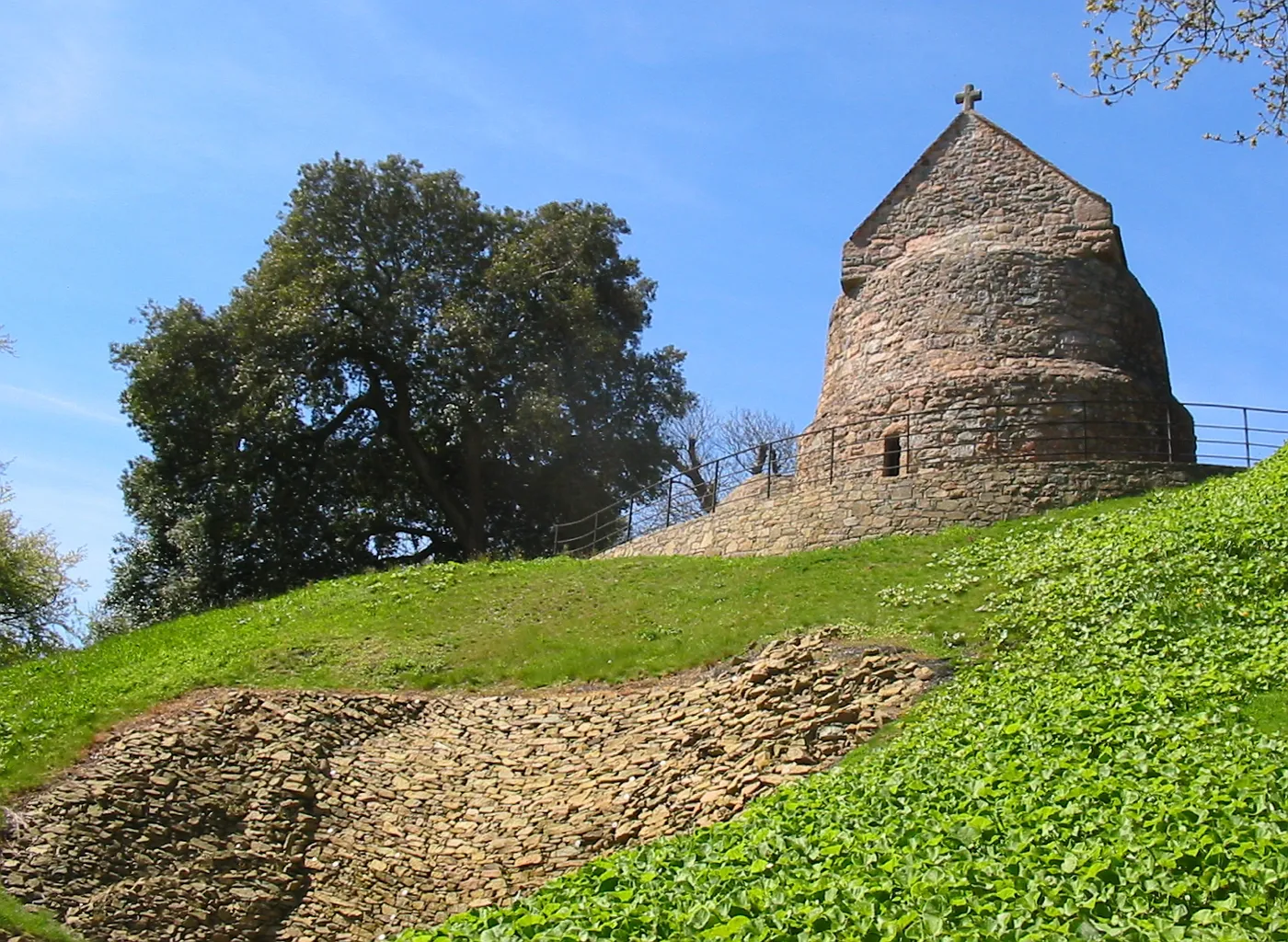
The Archaeological Marvel of the Passage Grave
La Hougue Bie encapsulates a passage grave beneath a 12.2-meter-high earth mound, extending 18.6 meters in length. Excavations began in 1925, revealing vase supports, human remains, and grave goods primarily comprising pottery. Despite historical looting, the site’s significance as a Neolithic ritual site, dating back to 4000-3500 BC, remains undiminished. It ranks among Western Europe’s largest and best-preserved passage graves. Interestingly, the grave aligns with the sun during the equinoxes, suggesting its ceremonial use, akin to a cathedral, where burials were secondary.
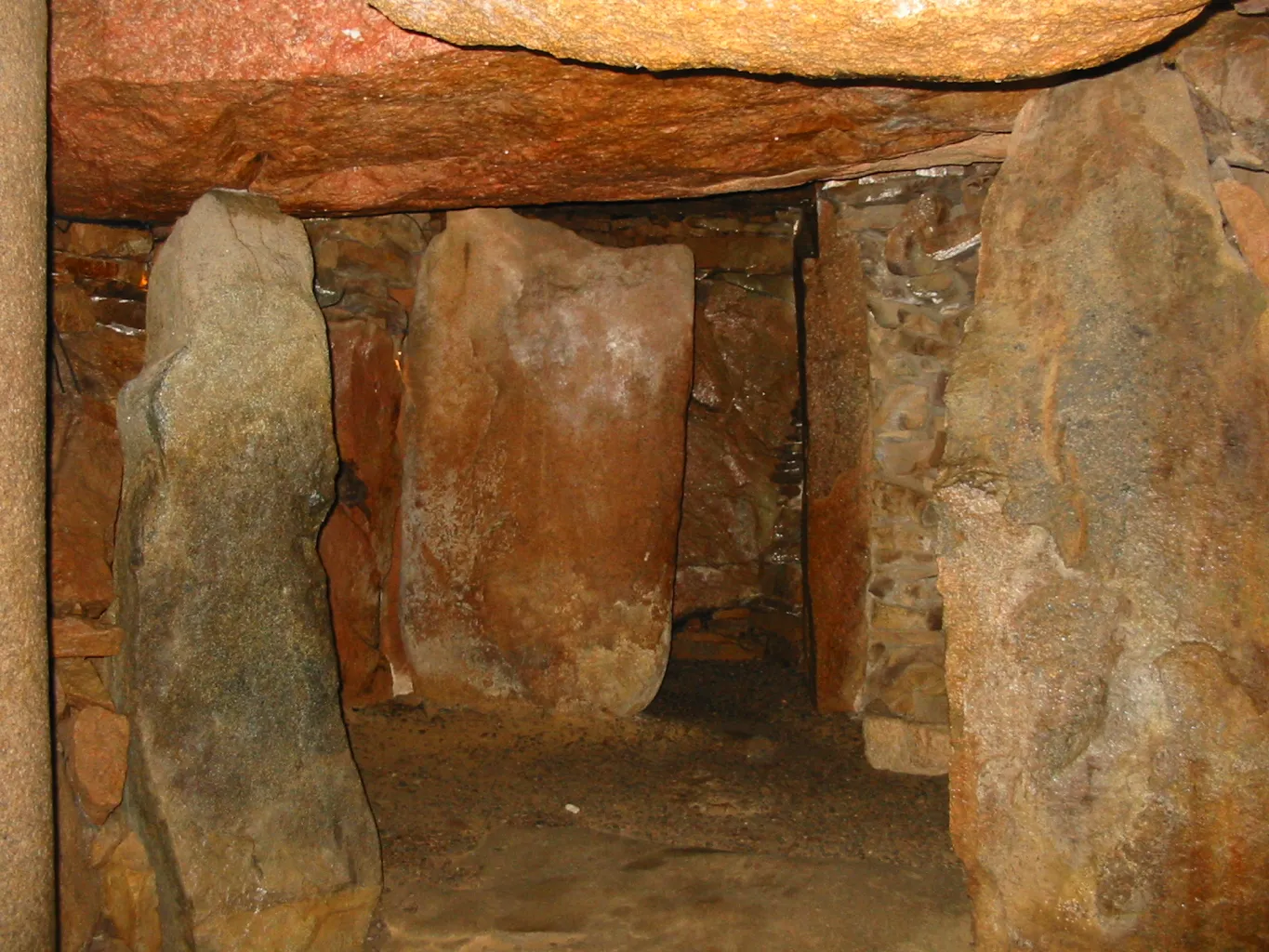
Medieval Chapels and the Prince’s Tower
Atop the mound, visitors find two medieval chapels from the 12th and 16th centuries. Over the centuries, these structures have undergone various transformations, including the integration of the Prince’s Tower in 1792 by Philippe d’Auvergne. Although demolished in 1924, the tower once served as a pivotal communication hub across the island.
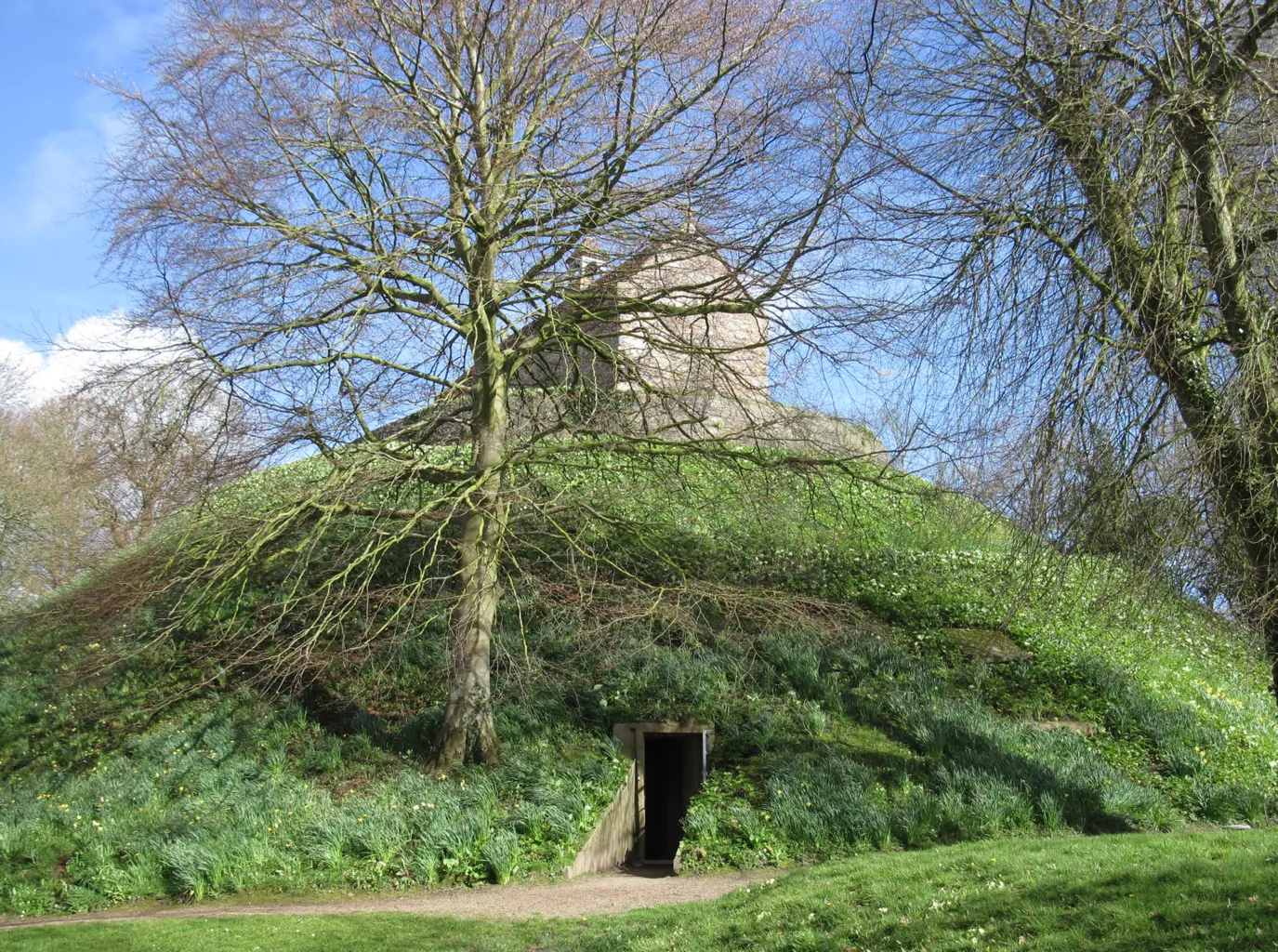
World War II Significance
During the Second World War, La Hougue Bie served as a strategic lookout and housed an underground command bunker. Today, this bunker is accessible to the public, featuring an exhibition that honors the forced laborers from across Europe who built Jersey’s defenses during the German occupation.
Museum and the Grouville Hoard
Managed by Jersey Heritage, the site’s museum presents the “Unearthing Le Câtillon II” exhibit. This display explores the Grouville Hoard, the world’s largest Celtic coin hoard, consisting of 70,000 coins and jewelry items buried in Jersey around 2,000 years ago. The exhibit offers insights into the possible motivations behind this significant act of preservation.
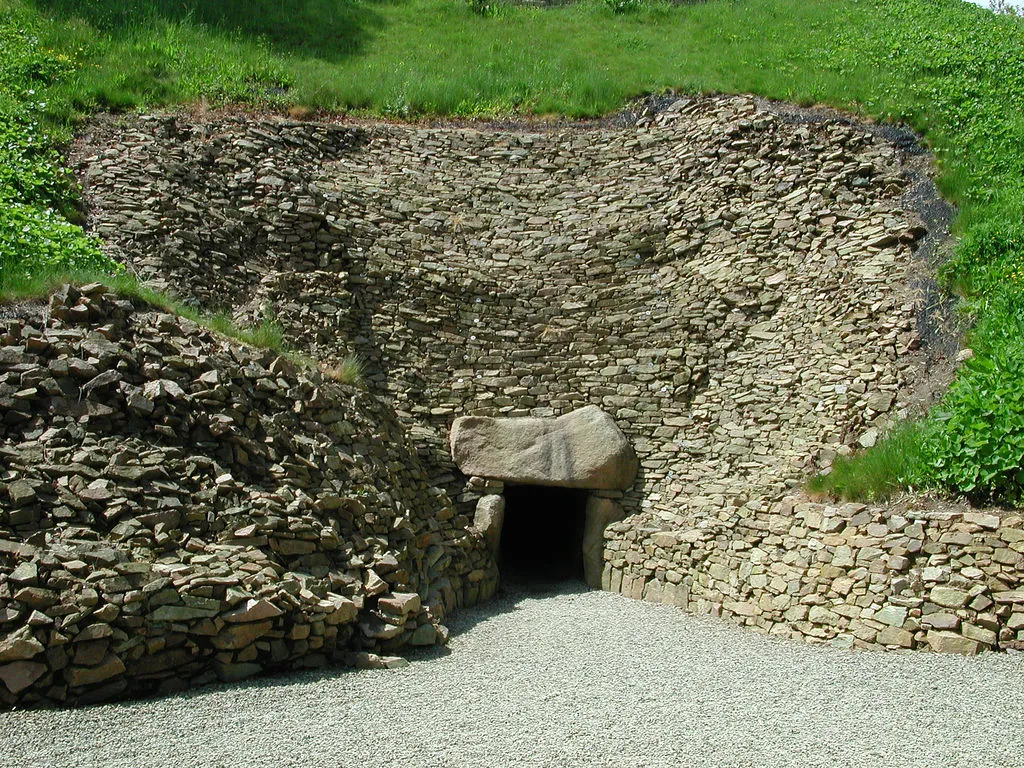
La Hougue Bie, with its deep historical layers and educational offerings, continues to be a beacon of Jersey’s heritage, inviting exploration and scholarly interest.

